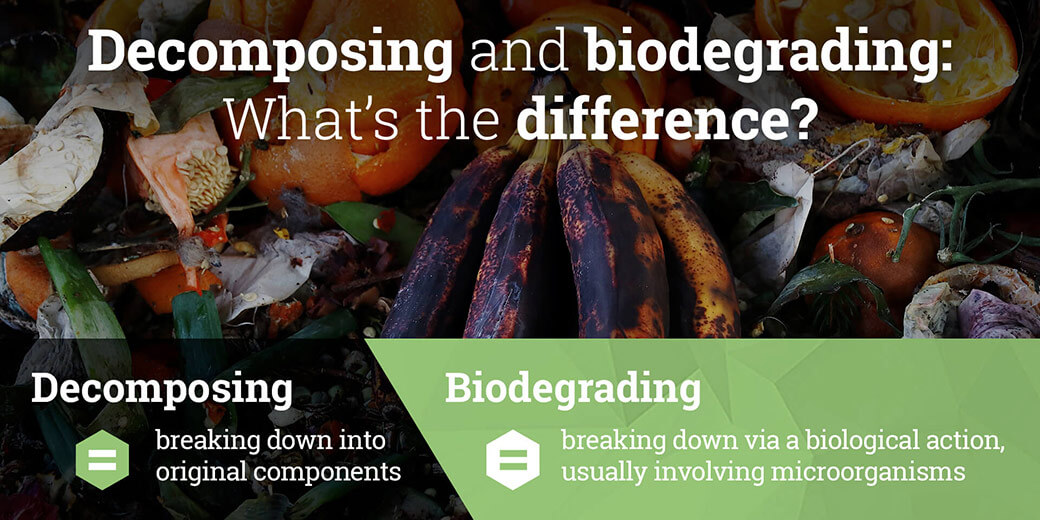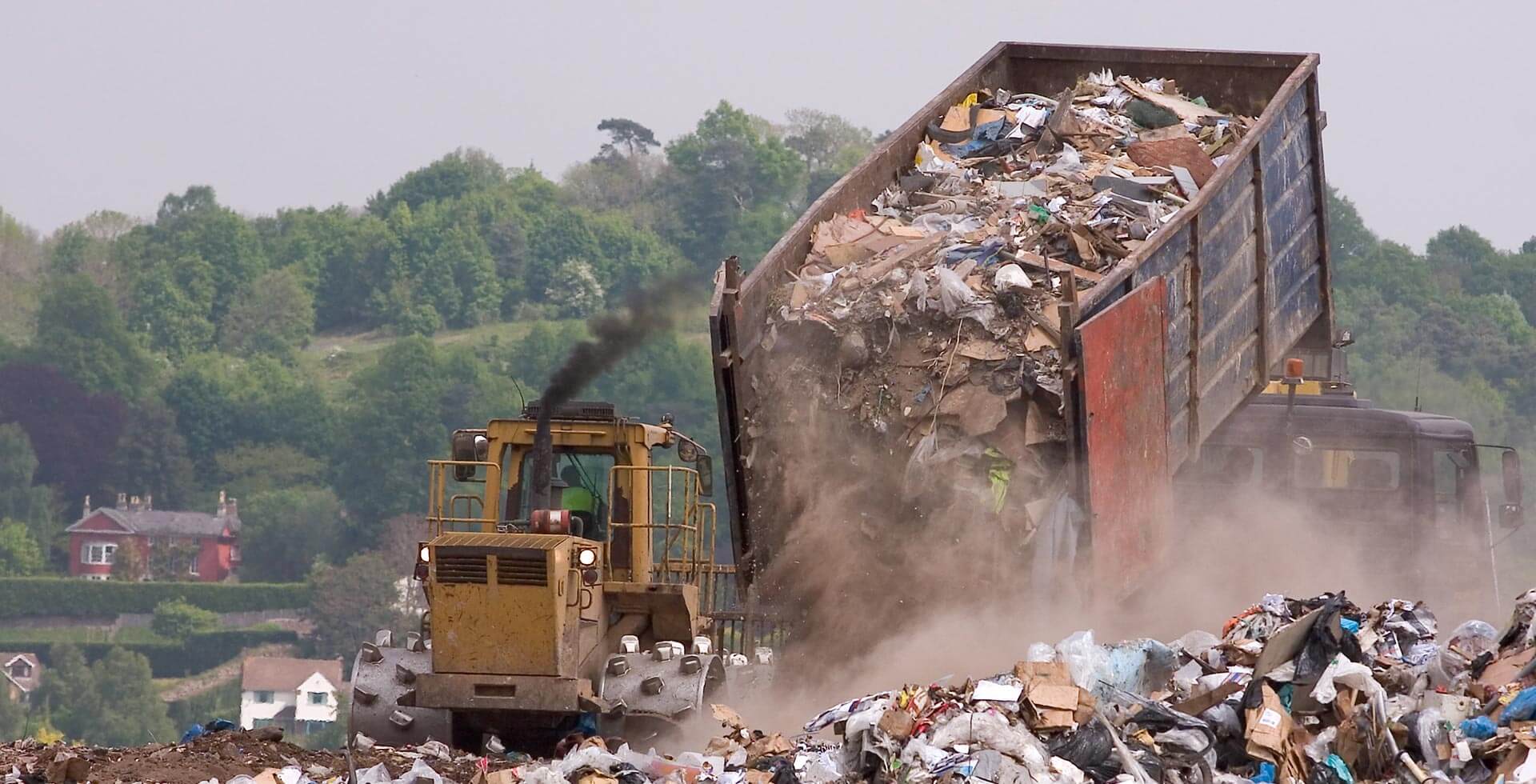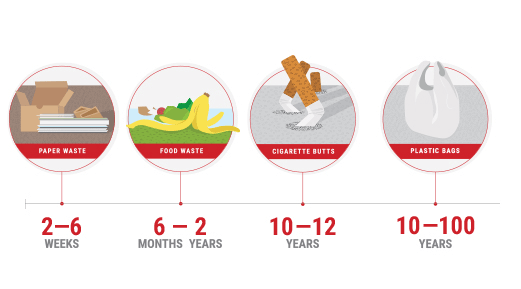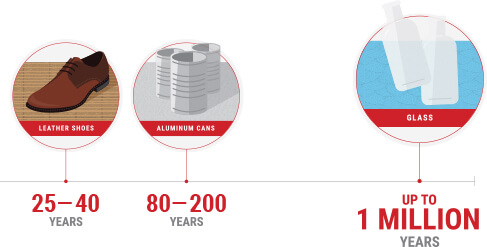A landfill is often thought of as a big hole in the ground where bulldozers indiscriminately plow our solid waste into the earth. The reality is more complicated, and it shows how much better it is for the planet—and the economy—to recycle or compost used products rather than bury them.
What goes into a landfill?
In most cases, landfills are municipal solid waste facilities that collect and bury whatever isn’t sent to municipal recovery facilities (otherwise known as MRFs). This includes food waste, paper, glass, plastic and other products that could otherwise be composted or recycled.
How do you build a landfill?
The short answer is, “very carefully.” According to the World Bank, the goal of a landfill’s design is “to provide for safe disposal of waste while protecting the environment.” Accomplishing this goal, however, requires much more than digging a hole and throwing trash into it.
Secondary Liner
Collection pipes
Gas capture
Stormwater Drain
Leak monitor
Cap
Waste
Primary Liner
Select a green hexagon on this landfill to learn more.
It starts on the bottom with a liner, which is made of clay, a synthetic material or a combination of both. When liquid emerges from the solid waste as it sits in the landfill, the liner prevents the liquid from entering the area’s groundwater. After that, there are pipes and stones and other design elements that allow for the ventilation of gases that naturally emerge from waste as it sits underground.
These naturally emerging gases can include methane, which contributes to global warming and is also highly flammable. Leaving it to sit unattended underground could have serious, explosive consequences, so many landfills have ways to vent it into the air. Others have ways to capture it and sell it to produce electricity, heat, pipeline-quality gas or vehicle fuel.
Why are there so many landfills in the U.S. and not as many in Europe?
One word: space. The United States is much larger by area than Europe, so there’s more room to bury waste. Europeans incinerate most of their waste and use the resulting energy produced through this process to power homes and cities—a much more efficient way to turn waste into a resource.
What happens in a landfill?
On a molecular level, a lot is happening beneath the surface of a landfill. Everything is decomposing (breaking down) or biodegrading (breaking down via a biological action), but these processes happen very, very slowly, as landfills are designed to prevent biodegradation and decomposition.

Decomposing and biodegrading: What’s the difference?
If everything in a landfill biodegraded as quickly as it would if left outside in the sun, the landfill would sink and be unstable, making it less predictable and less viable as a way to dispose of municipal solid waste. So, to avoid such an outcome, landfills are designed to eliminate the waste’s exposure to oxygen and sunlight, in order to prevent waste from decomposing.
How long does it take for things to decompose or biodegrade in a landfill?
The answer varies greatly depending on the type of material. Simply put, plastic doesn’t belong in a landfill—but it’s not alone in this category.
Plastic bags can take 10 to 100 years to degrade in landfills. Other plastic products can take as much time or longer to decompose in such an environment, where sunlight, air and moisture (three key parts of facilitating biodegradation) are scarce. That’s why it’s vital that the first choice for disposing of all plastic products is reuse or recycling.
Other products take a long time to biodegrade in landfills as well, since the point of landfills is not to facilitate, but to prevent, decomposition.
How long until it’s gone?
Landfill decomposition timeline
It’s important to remember that throwing something in the trash and having it go to a landfill is always better than littering. It’s just as important to think twice when you’re throwing something recyclable into the trash, where it’ll stay for decades, centuries or even millennia if it’s put into a landfill. Waste—whether it’s food, glass, aluminum, paper or plastic—is an untapped resource, one that we can put to use, benefiting both our economy and our environment.
Sources & Resources:
- https://www.epa.gov/sites/production/files/2018-07/documents/2015_smm_msw_factsheet_07242018_fnl_508_002.pdf
- http://siteresources.worldbank.org/INTCARBONFINANCE/Resources/MSW_SCS_FactSheet_Landfill_Design_Final.pdf
- https://www.epa.gov/landfills/municipal-solid-waste-landfills/
- https://www.epa.gov/lmop/
- https://www.waste360.com/mag/waste_fighting_elements_keys/
- https://www.livescience.com/32786-what-happens-inside-a-landfill.html
- https://ec.europa.eu/eurostat/statistics-explained/index.php/Municipal_waste_statistics#Municipal_waste_generation/
- http://storage.neic.org/event/docs/1129/how_long_does_it_take_garbage_to_decompose.pdf
- http://business-ethics.com/2010/09/17/4918-plastic-grocery-bags-how-long-until-they-decompose/


